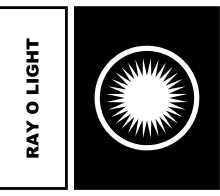Revolutionary Organization of Labor

The Revolutionary Organization of Labor, formerly known as the Ray O. Light Group, is an anti-revisionist Marxist-Leninist 1961 splinter group from the Communist Party USA.
Contrary to the standard Maoist view of "two line struggle", which posits that a dialectical materialist understanding of socialist relations of production is characterized by struggle between a Marxist-Leninist line and a Right-revisionist line, ROL takes a position that it terms "three line struggle." Believing that the position of the Maoists in the Cultural Revolution led to overlooking the danger of ultraleftism and "left"-revisionism, ROL argues that the Marxist-Leninist position is the center position which must struggle against both "left" and Right lines. For this reason, ROL sees China as having deviated from Marxism-Leninism in 1966, the year the Cultural Revolution began.
Based on the criteria put forward by Joseph Stalin in Marxism and the National Question regarding what qualities make up a nation as well as on the theories of African American Communist, Harry Haywood, Ray O. Light takes the position that there is an African American oppressed nation in the Black Belt Region of the United States with the right to self-determination and independence, and a substantial Chicano national minority in the US Southwest. While this position on the national question is not altogether that unusual, it is the only Marxist group in the US to propose that there also exists something like an Appalachian oppressed nation.
This group puts so much emphasis on national liberation because it considers a substantial portion of the US working class to be bought-off, that is, to be a part of the labor aristocracy which benefits too much from imperialism to have true revolutionary potential. It is noteworthy that this seems to be de-emphasized in their more recent writings. They consider the "main enemy of toiling humanity" to be imperialism, headed by US imperialism. They thus call for the unity of the economic anti-globalization movement with the political anti-war movement on a firm anti-imperialist basis. ROL views the most important task for communists today to be refounding the Comintern. In January 2008, the Ray O. Light group announced that the name of their organization was changed to the Revolutionary Organization of Labor.
Prior to being known as the "Ray O. Light Group", the organisation was known as "Youth for Stalin" and "Stalinist Workers Group for Afro-American National Liberation and a New Communist International", which published Stalinist Workers Group Bulletin until at least 1973. Prior to this, it was known as Hammer & Steel (H&S) or, more infrequently, New England Party of Labor, which split from the CPUSA following Nikita Khrushchev's Secret Speech to the 20th Congress of the CPSU. The group changed its name to Ray O. Light in 1976, and to Revolutionary Organization of Labor in 2008. Many of its members were Northern Communists who came to the South to organize. Hammer & Steel was a small editorial board which grew out of the struggle against what it saw as revisionism in the CPUSA. It criticized the CPUSA for liquidating the revolutionary line on the African American national question, and for returning to a position of "American Exceptionalism" (by supporting the presidential campaign of John F. Kennedy) which had previously been upheld by Earl Browder. Though it was a small group, H&S was the only group to be attacked by name by Krushchev in his polemics against the Communist Party of China (CPC) for siding with the CPC and Party of Labor of Albania (PLA) in the Sino-Soviet Split. H&S was the only revolutionary group in the US to have a representative at the 5th Congress of the PLA in 1966. Hammer & Steel argued that there was a focal contradiction (see, contradiction) around the oppressed peoples fighting for national liberation. This was reflected in the United States in the African American struggle for self-determination.
References
- Ray O. Light, Towards Victorious Afro-American National Liberation: A Collection of Pamphlets, Leaflets and Essays Which Dealt In a Timely Way With the Concrete Ongoing Struggle for Black Liberation Over the Past Decade and More. A Ray O. Light Publication, Bronx: 1982.
- Ray O. Light, The Bush Led Global Imperialist War: From 9-11 to the Present: Writings in Opposition to the US Imperialist Led Global War of Terror and on Our Tasks. A Ray O. Light Publication, Boston: 2006.